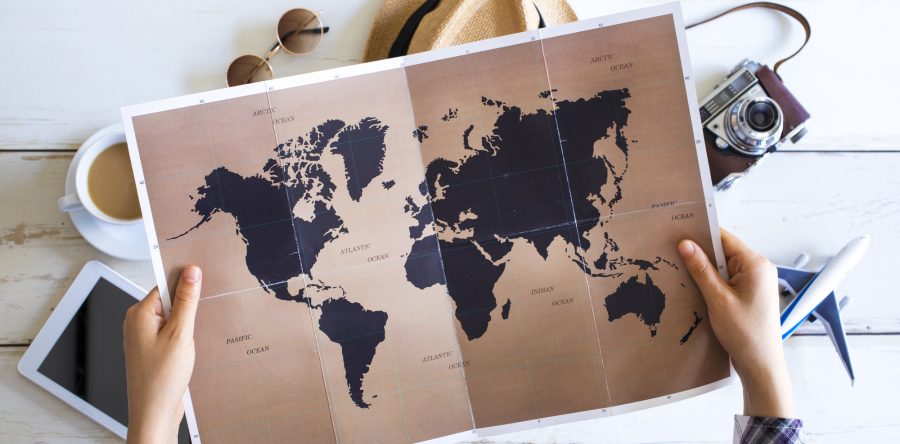A lot has changed since the outbreak of the novel coronavirus in Wuhan, China late 2019. A silent and invisible enemy travelled around the globe rapidly forcing mankind to press the pause button. The entire world has come to a standstill as one country after another implemented strict lockdown measures and shut down their economies to control the spread of COVID-19, which as infected over 3 million people as of writing this article.
The hospitality and travel industry has been hit particularly hard. Over 17 million people are working in the USA alone in the hospitality industry and globally the workforce accounts for more than 212 million people. The majority of air travel has been grounded and the prolonged closure of restaurants, hotels, entertainment venues and other relevant touristic establishments are particularly painful in tourism hot spots, which primarily depend on the hospitality industry. The primary focus for governments and businesses is the safety of their people. Whilst this focus will continue, how will COVID-19 shape the future of the hospitality industry?
What Will Flying Look Like Post The Pandemic?
The new normal will certainly look different when air travel resumes once the coronavirus pandemic subsides. Experts advise that health screenings for coronavirus and longer wait times are expected. Air travel changed significantly once before. After September 11, 2001 security screenings and baggage checks intensified and these measures are in place till to date. Thus, health screenings are likely to become a new norm as well.
Dubai based Emirates Airline, is known for its superior customer experience. The airline has been at the forefront of introducing new procedures. It was the first airline to relaunch some international flights, although primarily for repatriation purposes. Strict measures have been taken to keep the crew and passengers safe. According to the airline, all cabin crew, boarding agents and ground staff who come in contact with passengers will have to wear personal protective equipment. Moreover, all passengers and employees will have to wear gloves and masks at the airport. They will also have to undergo thermal scanning to measure their temperature. Additionally, Emirates Airline has pre-allocated the seats for passengers, with vacant seats placed between family groups or individual passengers to enforce social distancing. The in-flight service has been modified to reduce personal contact. Lastly Emirates Airline and Dubai Health Authority (DHA) partnered to introduce rapid coronavirus (Covid-19) tests for passengers at the gate prior to boarding.
Could other airlines follow these procedures to ensure safety and gain people’s trust? Only time will tell. Once lockdowns are lifted, airlines will most likely offer some great deals to inspire people to travel the world once again. The customer may experience more distant flight attendants, however, but enjoy cleaner cabins and lavatories and perhaps more space in the economy class.
What Will Entertainment Look Like In A Pandemic?
Necessity breeds innovation and sometimes old trends return, such as drive-in theaters. With cinemas closed, drive-in movies are making a huge comeback. In case you wonder, what a drive-in cinema is, it is exactly what it says. People are going with their cars to an outdoor venue, usually a large parking lot, where a large screen is installed. They park up and watch a great movie from their car. They hear the film by tuning into a specified radio frequency. Watching movies outdoors was hugely popular in the 1950s and 1960s. However, the trend declined with the arrival of video rentals in the 1970s.
Drive-in movies are proving popular in a pandemic, when social-distancing is essential. They give people a chance to do something new and different in their free time. This blast from the past is most likely to stay around for a while and some drive-in movie operators will create the ultimate customer experience such as filmmaker Spencer Folmar, who creates a drive-in theater with 500 spots outside of Orlando, Florida. Folmar’s goal is to create an immersive visual experience, that will have a lighthouse in the middle from which moviegoers can see screens in every direction.
What Will The Restaurant Experience Look Like Post COVID-19?
The impact of COVID-19 will most likely be felt the longest in the food and beverage sector. It is reasonable to believe that restaurants that offer drive-through, home delivery or pickup service are likely to rebound faster from the pandemic, while restaurants which offer dine-in only may take significantly longer to return to a profitable operation. Although it is likely that a number of customers will return to their favorite local restaurants to show loyalty, support and solidarity, others might be cautious and wait a little bit longer. Dine-in customers post COVID-19 might be more demanding with regards to safety, cleanliness and overall quality. As a result, restaurants may need to adjust their entire operation to cater to these new demands. Restaurants may need to change their table arrangements to allow increased spacing or breaking up larger rooms into smaller spaces. Customers may demand greater access to hygiene products such as sanitizers or wipes. The demand for digital menus may increase and make paper menus obsolete. Moreover, meal plates may need to be covered and cutlery may need to be packaged before they arrive at a table. Fine-dining restaurants may need to introduce delivery service. These are just a few of the adjustments that may need to be made by restaurant operators. However, restaurants that anticipate their customer’s concerns, address their needs, and fulfill their demands will most likely return to normalcy and profitability a lot sooner than operators which try to hold on to the past and continue as before.
Measuring the customer experience by conducting surveys or sending mystery shoppers, who evaluate secretly the level of service and compliance with all precautionary measures will be crucial to future business success. We are here to support you create unforgettable customer experiences. Learn more here.


